The ways in which we recreate, socialize and conduct business change in response to both local and global inputs. How communities adapt — and where they make investments in infrastructure — matters.
This is particularly topical when it comes to park and recreational assets. Municipalities of all sizes have witnessed a sea change of interest in outdoor spaces and activities that can be safely practiced, no matter the global health climate. It is a transformation that many experts are suggesting is here to stay, and community leaders are responding by investing in assets that meet the needs of solo practitioners and team enthusiasts alike.
How leaders assess, plan and fund their local parks and recreational amenities has also fundamentally changed. It is no longer as simple as installing a few new park benches, planting a few trees or paving a new bike trail. Park planning must now contain a heightened devotion to resiliency, accessibility and connectivity — with options that will excite, engage and sustain residents on any given day or in response to future fluctuations in health, climate or social activity.
Let’s discuss a few key components of this new age of park planning and what municipal leaders should be considering before making any rash investment decisions.
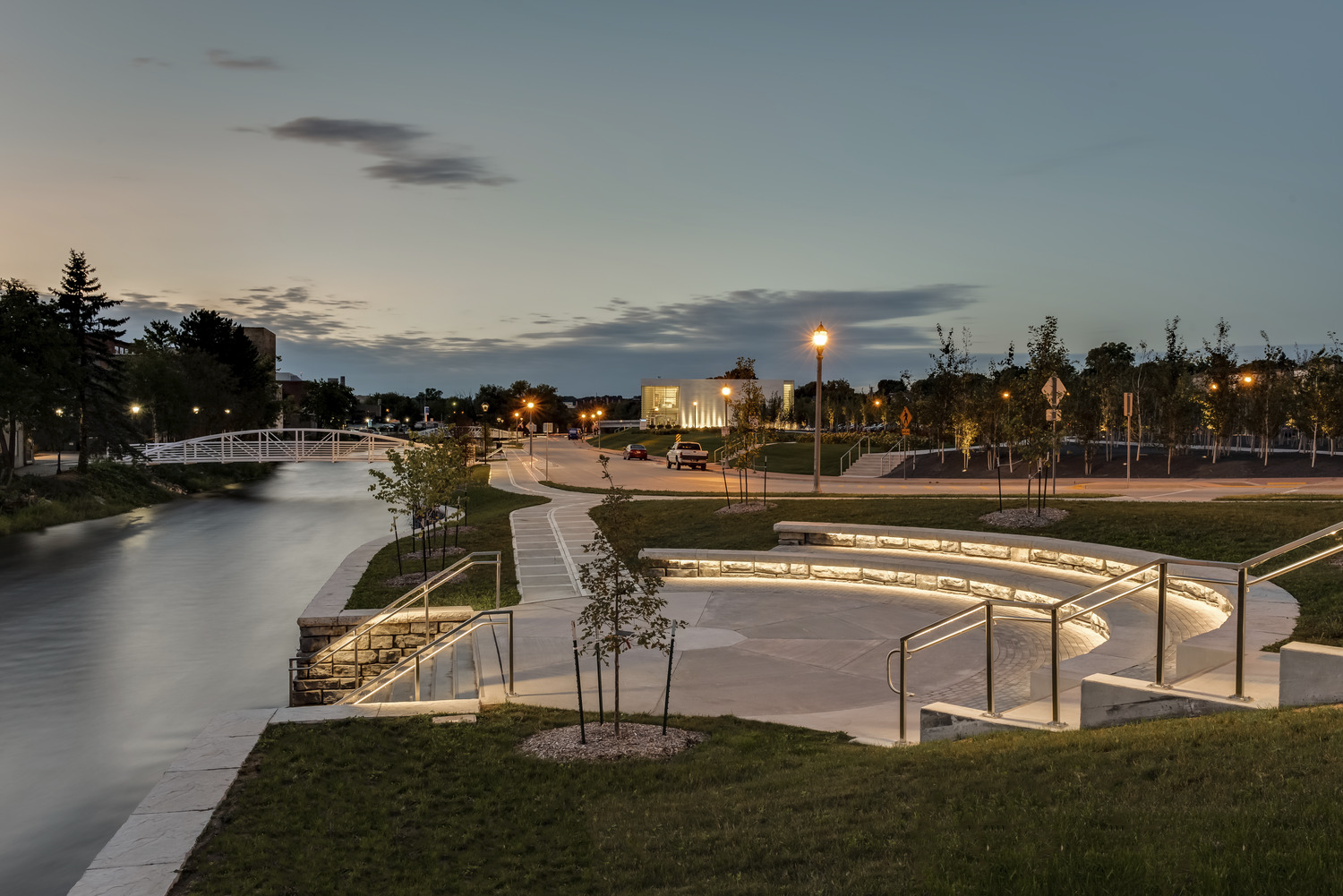
Downtown Riverwalk – West Bend, Wisconsin
Assessments and Planning.
Community leaders should begin by conducting a thorough and comprehensive assessment of local and regional park and recreation assets. This might include a park audit or the more formal development of a Comprehensive Outdoor Recreation Plan (CORP) or Master Park Plan document. An official park audit or assessment investigates a number of elements critical to the creation of a plan. It includes analyzing citizen demographics and trends, the location and geography of existing parks and recreational spaces, analysis of needs and demands, current condition of park and recreational facilities, an opportunities analysis and the identification of gaps. At this stage of planning, it is useful to employ a public engagement program to collect local input or employ surveys and counters to collect data about pedestrian, bike and park traffic numbers. Communities should also conduct an Americans with Disabilities Act (ADA) audit for park and recreational spaces. These audits address accessibility deficiencies and define corrective measures in order to bring public systems into compliance and provide welcoming places for all to enjoy. Combined, a CORP and an ADA audit provide communities with an excellent assessment of gaps within their facility placements and programming—imperative for fair and equal use by all.
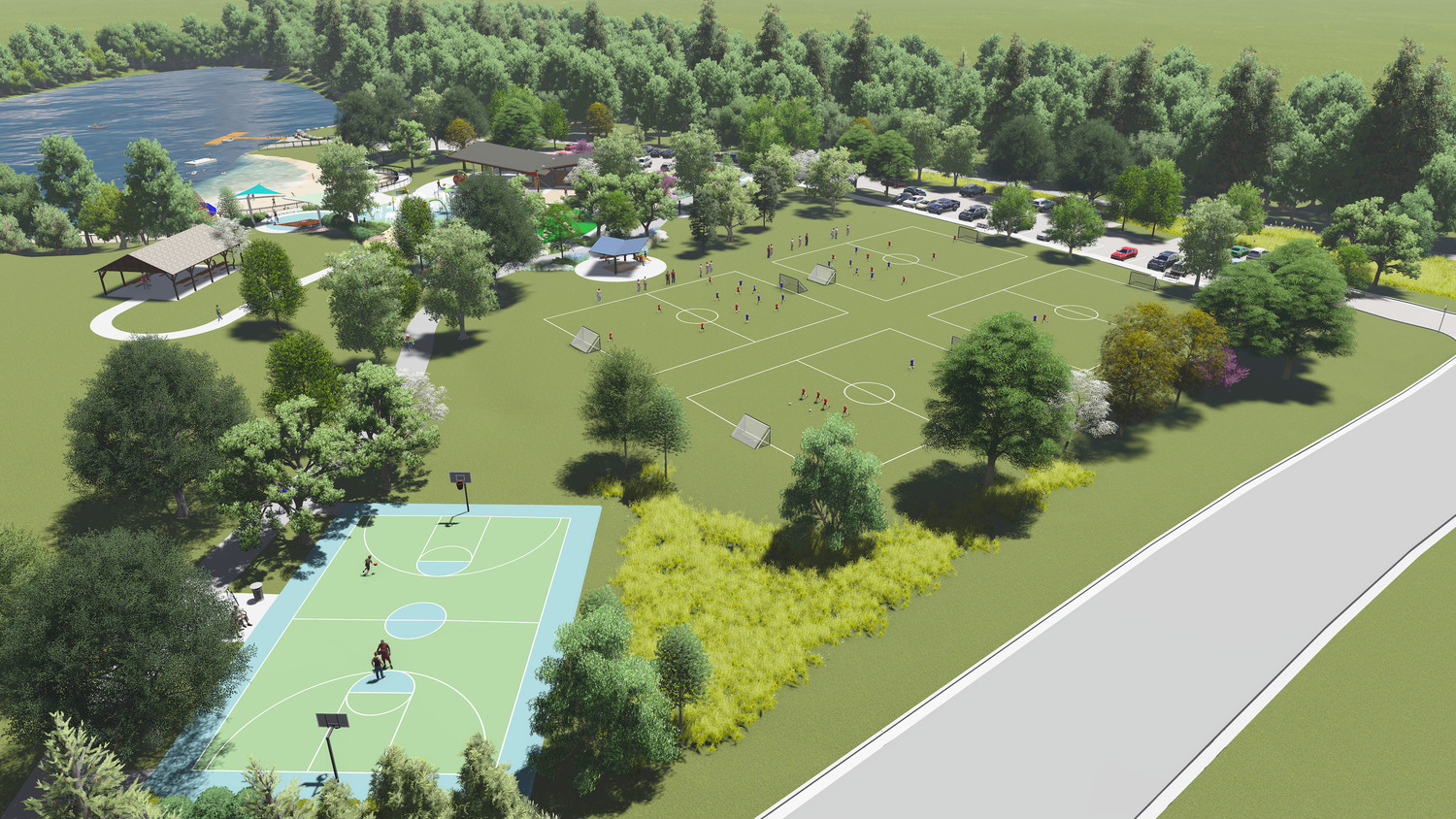
Fireman’s Park in Verona, Wisconsin
Balanced Group vs. Individual Opportunities
Team-based recreation versus individual recreation. Is one more important to support than the other? Is one more beneficial? Should a community invest in facilities that support the programming of their local schools and recreational clubs rather than those that are frequented most often by individuals? The answer is: both are important. Psychologists, doctors, parents and exercise physiologists have all weighed in and recognize that both team and individual activities are beneficial in a variety of ways. Team-based sports are a great means of developing social skills, a sense of camaraderie and healthy levels of competition, for children and adults alike. Providing sports fields, ball courts, aquatics facilities, rinks and stadiums are absolutely a means to support these activities.
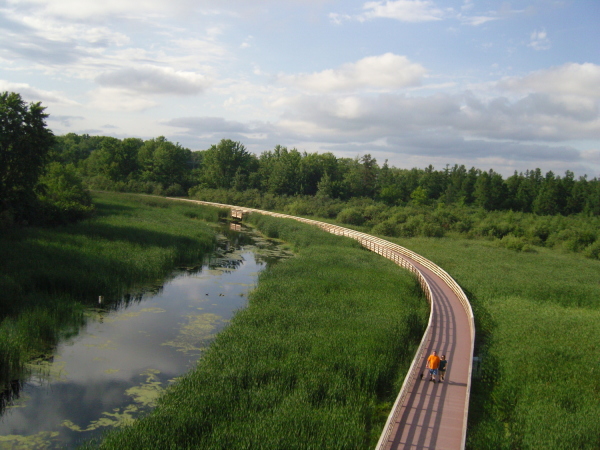
However, there is also a shift toward more passive and individual sports, which foster life-long exercise and individually motivated activity, which is equally important to promote. Activities such as walking, biking, hiking, paddling, fishing, skating and skiing are more adaptable to people as their bodies age and can no longer handle higher-impact or competitive sports. These solo or small-group hobbies witnessed the greatest uptick in numbers during the worst of the COVID-19 pandemic and the implementation of social distancing protocols. During that time, many local recreation equipment stores selling bicycles, camping and fishing gear reported higher-than-average sales, challenged with keeping enough inventory in stock to meet demand. As such, community leaders need to ensure they have a diverse array of options for all users, in all age groups, ability and interest levels.
Adaptive All-Season Recreation.
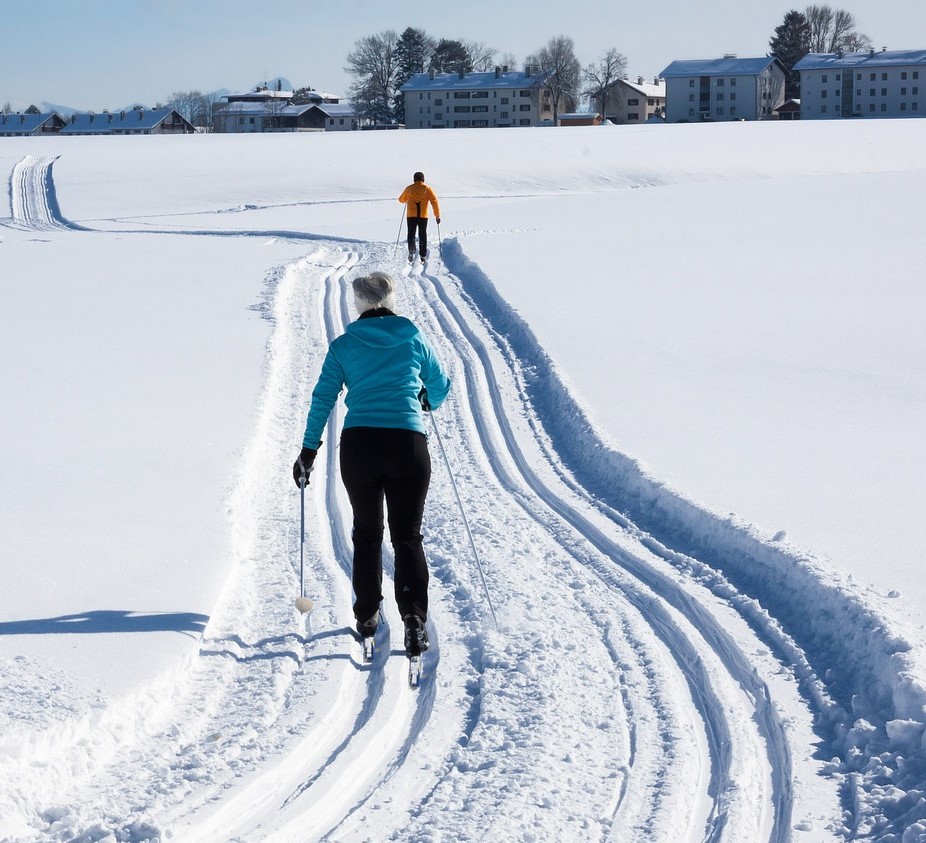
Communities have immense opportunity to transform park amenities and trails to meet the changing seasons. Oftentimes, slight adaptations in programming or small investments in equipment can mean providing residents and visitors with year-round recreational options. This can be key for smaller communities or those with more limited budgets. For example, in regions where winter brings snow, an entire new subset of recreational opportunities awaits. Summer biking and hiking trails, pedestrian paths and even portions of sidewalks can be converted into Nordic ski trails, snowshoeing or fat biking trails. Any hill or change in elevation can quickly become a place to sled or rent snow tubes. A growing trend, especially across a number of provinces in Canada, is ice skating trails that wind their way through dense forests and across snow-covered landscapes, paying tribute to the origins of skating as a means of travel. The point being: all-season recreation does not necessarily need to be a big investment; a little creativity and small adaptations can make a huge impact.
Resiliency to Climate Change.
Speaking of seasons, they are changing. Science reveals that our planet is experiencing climate change, and with it, oftentimes radical changes in weather. Planning for future park and recreational assets — or the expansion or renovation of existing ones — means planning for climate resiliency. This affects placement, materials, design and engineering, especially when we’re talking about locations near water. Parks, marinas or facilities along our nation’s waterfronts — from creeks and rivers to the Great Lakes or oceans — need to withstand dramatic changes in water levels, with infrastructure that is flood resistant and can withstand extremes. A good starting point for communities located on rivers, lakes or within floodplains is to review the historical data of the body of water and to have the floodplain thoroughly mapped or a 2D digital model created prior to embarking upon any new waterfront projects. Understanding how water interacts with a site and knowing how to develop resilient infrastructure is paramount to the success and sustainability of community amenities within flood-prone or other sensitive landscapes.
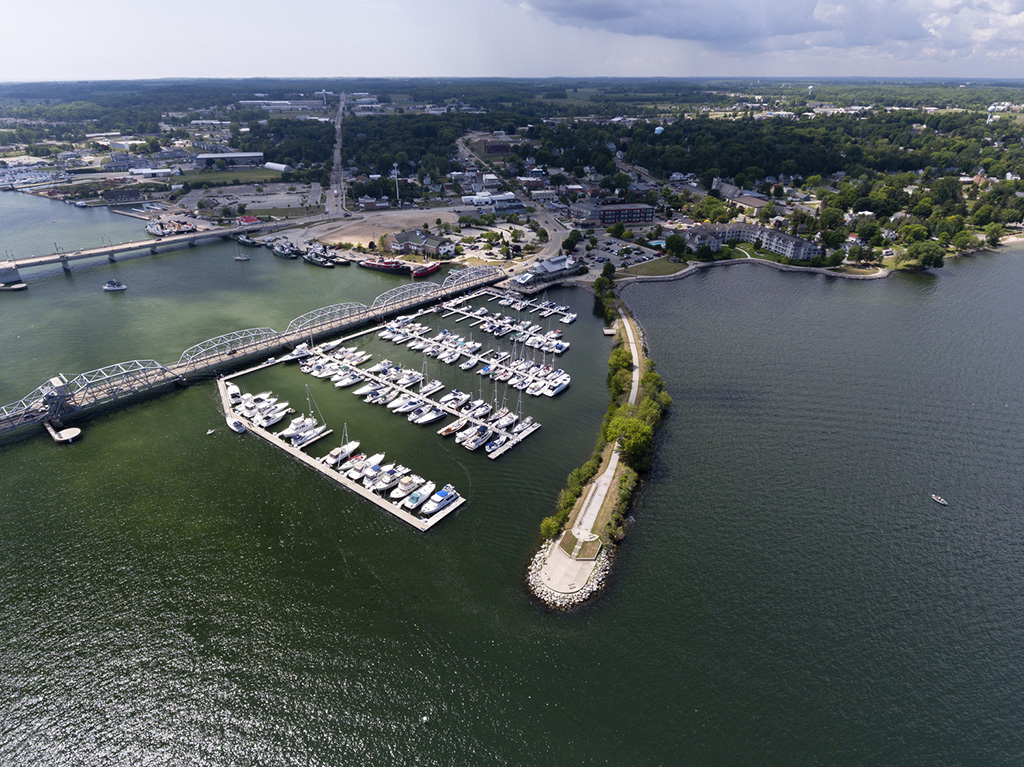
Harbor Club Marina – Sturgeon Bay, Wisconsin
Community Connectors.
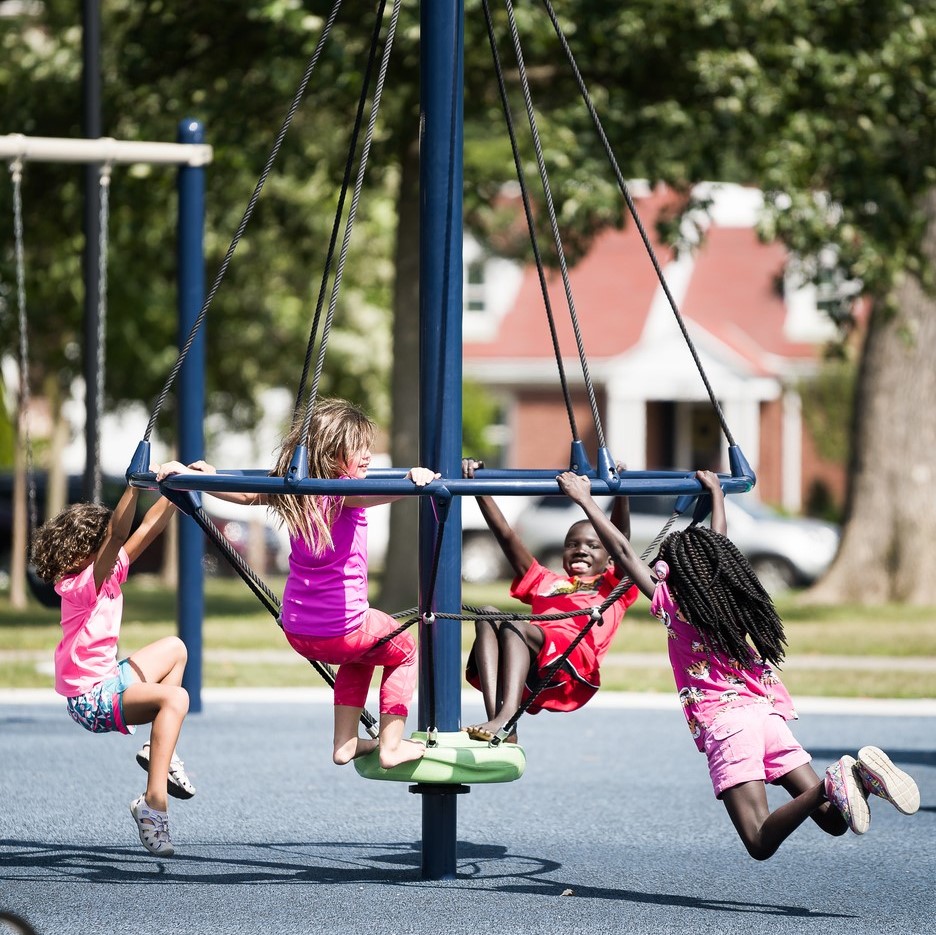
Erb Park playground – Appleton, Wisconsin
For decades, an aerial map of a community would show park and recreational centers as disconnected green shapes dotting the grid. Destinations, yes, but oftentimes sequestered to the edges of the city limits and reachable only by private vehicle. Today, the whole definition of a park network is changing. The goal is to incorporate inter-community connectivity, alternative transportation options and a cohesive collection of assets that work together as an ecosystem. Residents want trails that feed into and out of each other, connect to other parks, neighborhoods, public transit stations or downtown and business districts. They want trails that connect to schools, many with the opportunity to utilize funding through the Safe Routes to School program through the U.S. Department of Transportation. Many communities are also taking a broader view, looking beyond the confines of their own municipal boundaries and exploring options to connect amenities within the broader county or region. This is true in urban, suburban and rural settings alike. For community leaders, the options to expand, embed and collaborate with neighbors is great. It is precisely these types of investments and visioning that residents look for when choosing a place to call home.
A Silver Lining.
This renewed interest in health, recreation and the great outdoors presents great opportunities. Increased use, however, can also yield negative impacts if these spaces are not properly planned for and preserved. Communities have the ability to create public park and recreational spaces that will withstand fluctuations in use, climate, weather and public health—and there are ample tools available to do it right. Start planning today; your residents will thank you for it.
For a more in-depth conversation, tune in to MSA’s webinar: Park Planning in a New Era of Recreational Trends and Challenges.
